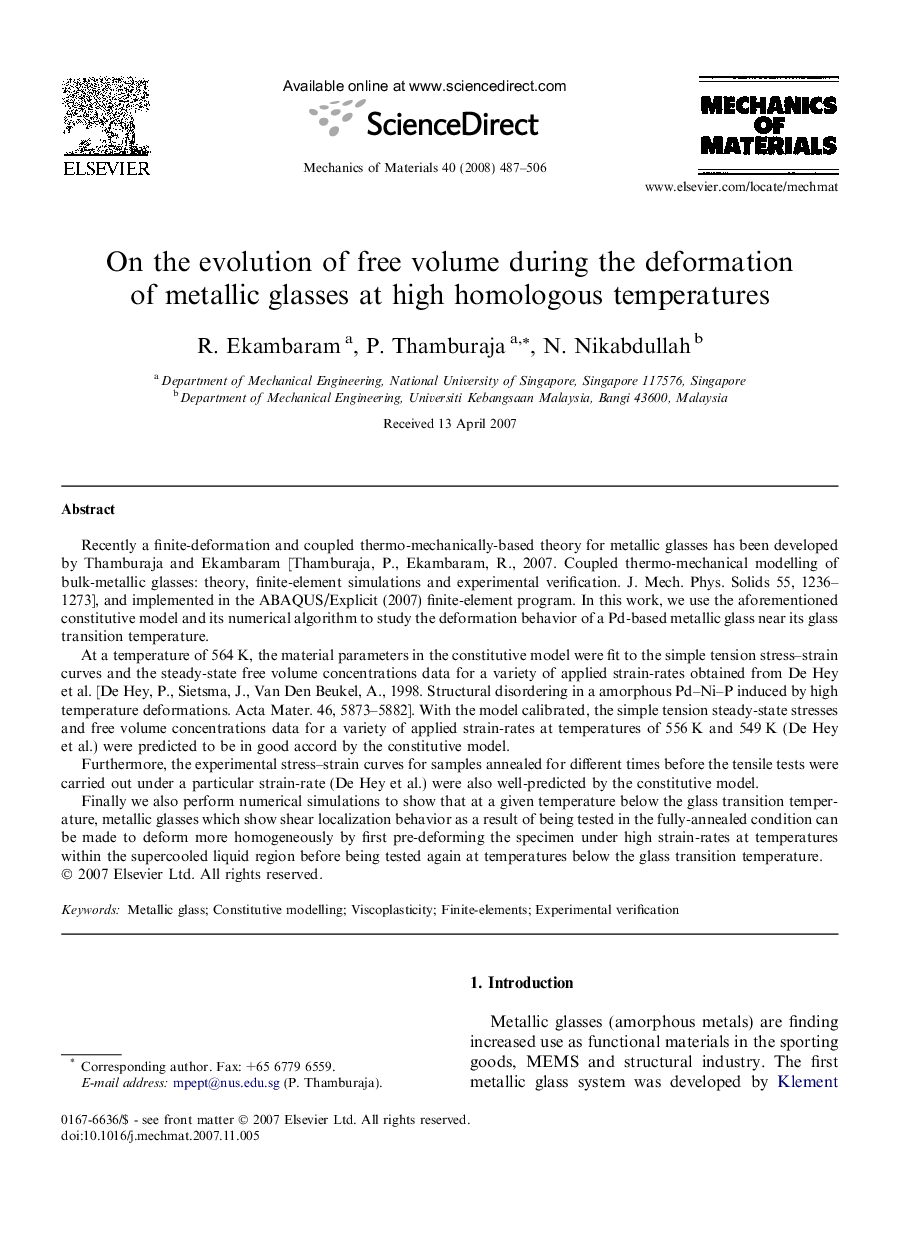| کد مقاله | کد نشریه | سال انتشار | مقاله انگلیسی | نسخه تمام متن |
|---|---|---|---|---|
| 800999 | 1467540 | 2008 | 20 صفحه PDF | دانلود رایگان |

Recently a finite-deformation and coupled thermo-mechanically-based theory for metallic glasses has been developed by Thamburaja and Ekambaram [Thamburaja, P., Ekambaram, R., 2007. Coupled thermo-mechanical modelling of bulk-metallic glasses: theory, finite-element simulations and experimental verification. J. Mech. Phys. Solids 55, 1236–1273], and implemented in the ABAQUS/Explicit (2007) finite-element program. In this work, we use the aforementioned constitutive model and its numerical algorithm to study the deformation behavior of a Pd-based metallic glass near its glass transition temperature.At a temperature of 564 K, the material parameters in the constitutive model were fit to the simple tension stress–strain curves and the steady-state free volume concentrations data for a variety of applied strain-rates obtained from De Hey et al. [De Hey, P., Sietsma, J., Van Den Beukel, A., 1998. Structural disordering in a amorphous Pd–Ni–P induced by high temperature deformations. Acta Mater. 46, 5873–5882]. With the model calibrated, the simple tension steady-state stresses and free volume concentrations data for a variety of applied strain-rates at temperatures of 556 K and 549 K (De Hey et al.) were predicted to be in good accord by the constitutive model.Furthermore, the experimental stress–strain curves for samples annealed for different times before the tensile tests were carried out under a particular strain-rate (De Hey et al.) were also well-predicted by the constitutive model.Finally we also perform numerical simulations to show that at a given temperature below the glass transition temperature, metallic glasses which show shear localization behavior as a result of being tested in the fully-annealed condition can be made to deform more homogeneously by first pre-deforming the specimen under high strain-rates at temperatures within the supercooled liquid region before being tested again at temperatures below the glass transition temperature.
Journal: Mechanics of Materials - Volume 40, Issue 6, June 2008, Pages 487–506